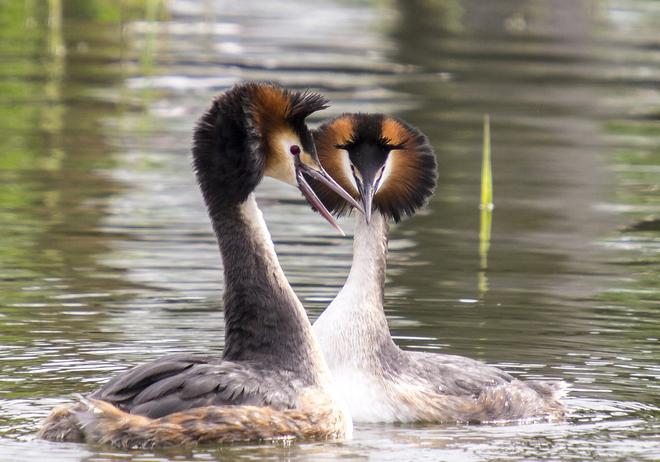“It was a rare sighting. We had never seen such huge flocks,” says Visakhapatnam-based birding enthusiast Vivek Rathod, when he noticed a big group of black and white waders circling the water at Naupada salt pans in Srikakulam district earlier this year. It was the pied avocet, a migratory bird species that breeds in Europe and Central Asia, arriving in Africa and southern Asia during winters.
“I was on my regular birding trip to the place and never expected to see this bird as it was never before reported from here. We used to travel to Kakinada to see just about two to three pied avocets,” says Vivek, a board member of Wildlife Conservation Through Research and Education, a Visakhapatnam-based organisation. This time, he was surprised to see a flock of 170 pied avocets foraging in the shallow brackish water, scything their bills from side to side.
Earlier in June, large flocks of greater painted snipe and slaty-breasted rail was spotted by Bhupen Sonowal, another birding enthusiastic, at Podugupalem, one of the major birding hotspots of Visakhapatnam. “We generally see only three or four of these species at a time. They are shy birds and prefer to stay in bushes. But this time, we were surprised to spot at least 30 from each species,” says Janardhan Uppada, an avid birder. The birders also recorded the presence of brown crake, a waterbird, for the first time at the same place. “There can be a surprise at every corner, if you are watchful and careful to not disturb the bird habitats around us,” says Janardhan as he embarks on another season of birding, armed with his camera and lens and a field guide.
With the onset of the birdwatching season, the birders of Visakhapatnam are geared up to experience an immersive way to connect with Nature and document the journey of migratory bird species as well as record new sightings from the region.
“The annual Asian Waterbird Census will begin shortly and we are making a plan to promote birdwatching in and around Visakhapatnam by involving Nature enthusiasts to join regular birders in trips to birding hotspots in the vicinity,” says Vikram Penmetsa, founder of Vizag Birdwatchers Society (VBS), a registered organisation representing the birders of Andhra Pradesh.
India is a critical non-breeding destination for many widespread Eurasian bird species. In and around Visakhapatnam, places like Indira Gandhi Zoological Park, Tagarapuvalasa pond, a water body adjacent to the airport, Gosthani River mouth in Bheemili, NTPC fly ash pond, Mangamaripeta, and Kambalkonda Wildlife Sanctuary are great birding spots while in Srikakulam, Vemulavada lake (Dali Cheruvu), Naupada Salt Pans, Kalingapatnam (Kokkiliputtuga) estuary, Nelavanka estuary are some of the hubs of migratory birds. “The great crested grebe, a winter migrant to India, has significantly grown in numbers,” says Vikram. “About four to five years ago, it used to be found in small pockets of Thatipudi Reservoir. Now they are found in all wetlands of Srikakulam and some places in Visakhapatnam,” he adds.

Interestingly, earlier mostly juveniles of the great crested grebe were reported from the region, but for the first time this year, birders reported around five pairs nesting at a lake near Anandapuram. “This is a very unusual sighting as over the past 15 years, we had only recorded juveniles from the region,” says Janardhan. According to ornithologists, the thriving population of the great crested grebe is a good indicator of the water quality as the species is not found in areas where water bodies are polluted or over-fishing occurs. “They prefer undisturbed water bodies where they can dive deep to look for aquatic insects, fish and shrimps,” adds Janardhan.
Looming threats
According to the latest report by the State of India’s Birds, raptors, migratory shorebirds, and ducks have declined the most across the country. The IUCN Red List shows that 49% of bird species worldwide are declining in population, with only 6% increasing. The report highlighted the Statewise highest conservation priority species based on multiple factors. In Andhra Pradesh, the species listed under this category include the lesser florican, Terek sandpiper, Jerdon’s courser and green munia.
While Andhra Pradesh is one of the strongholds for the spot-billed pelicans found in large breeding colonies at places like Telineelapuramm, the species is suffering a rapid decline, affected by nematode and trematode parasites, which eventually lead to starvation by death among infected birds.
The State of India’s Birds report stresses on threats for large waterbirds that include habitat loss, dwindling fish populations and changing agricultural practices, among others. “In Visakhapatnam, a dwindling bird population due to habitat loss has been reported from places like Kondakarla Ava, Meghadrigedda reservoir downstream channel (behind airport), Khambala Cheruvu (lake), Kapuluppada lake and Kailasagiri Hills,” says Vikram, who has been documenting the bird species of Andhra Pradesh along with the members of VBS over the past decade on eBird, an online database of bird observations.







